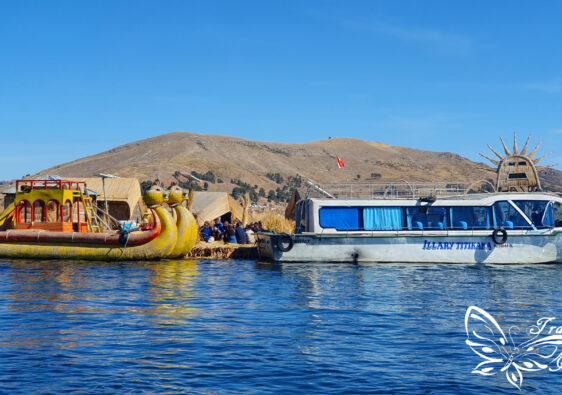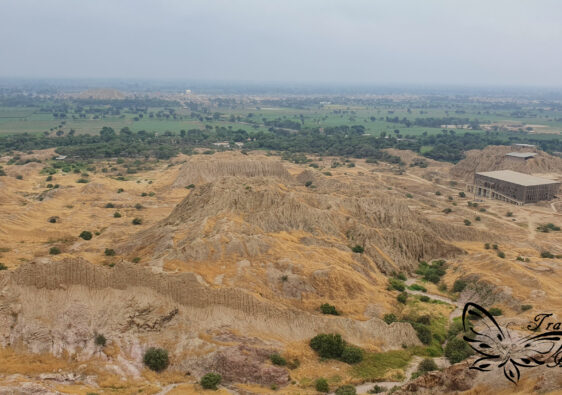It is better to see one time than to hear one hundred times
— Mongolian Proverb —
Taking a train on the Trans-Mongolian Route
How would you like to enter Mongolia? I believe that entering Mongolia by train is the most impressive option. The trains are running on low speed, providing enough time to inhale the vast emptiness of this country. If you want to explore locations further away from Ulaanbaatar, consider national flights. Mongolia’s only international airport, the Chinggis Khaan international airport, is located close to its capital Ulaanbaatar.
The difference between Trans-Mongolian and Trans-Siberian Railway
The well-known Trans-Siberian Railway is the route from Moscow to Vladivostok, crossing Yekaterinburg, Omsk, Novosibirsk, Krasnoyarsk, Irkutsk, Ulan-Ude, Chita, and Khabarovsk, to name some major stops along the route. Mongolia or China are not part of Siberia, therefore, the train-connection from Irkutsk to Beijing, crossing Mongolia, is called the Trans-Mongolian Railway.
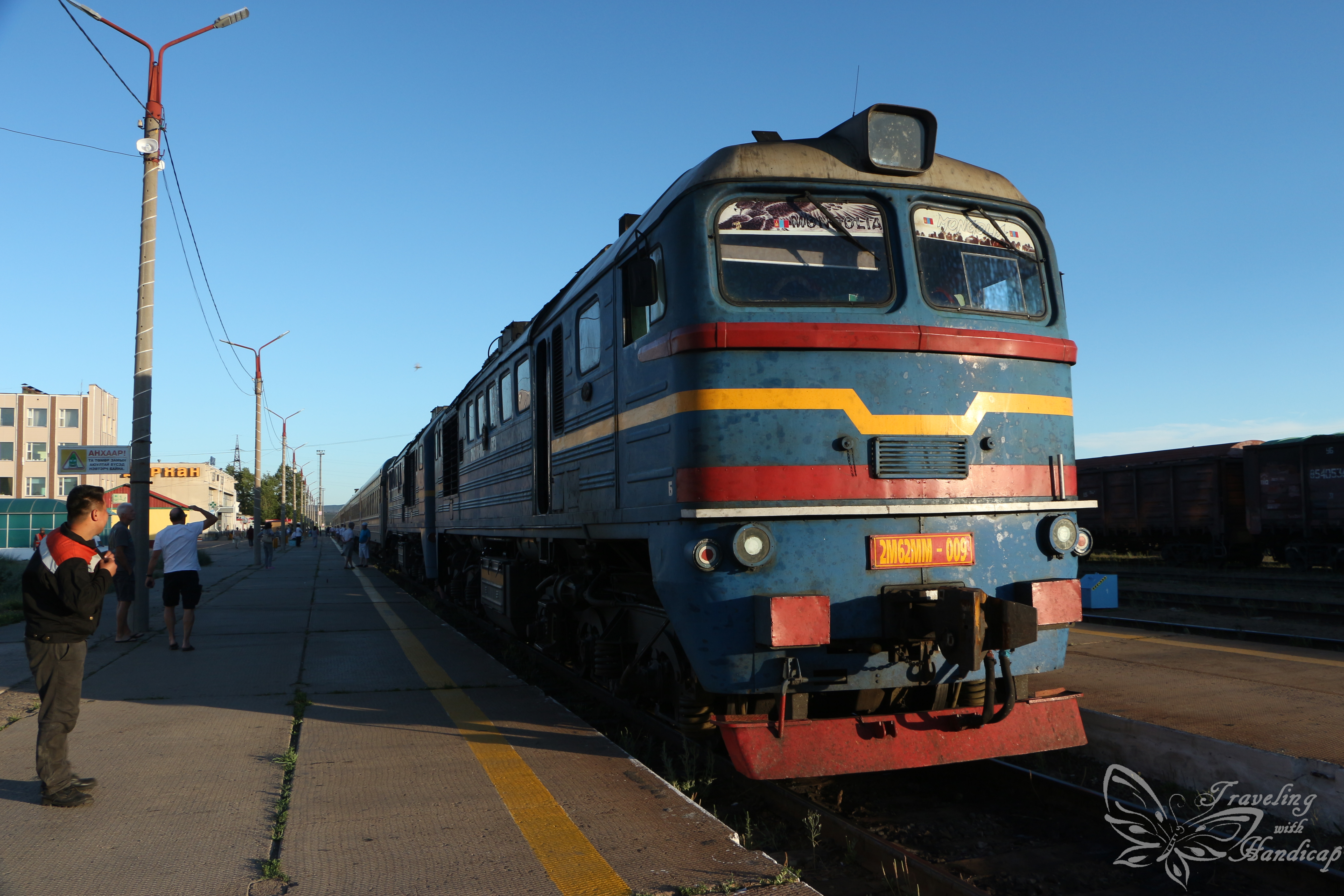
Train Tickets for the Trans-Mongolian Route
It is worth to investigate whether you want to take the full route between Beijing to Moscow or have a stop-over in Ulaanbaatar. If you start your train journey in Ulaanbaatar, you should consider buying the ticket directly within a train office in Ulaanbaatar, since they will be cheaper than through international bookings.
There are both Mongolian, Russian and Chinese trains available, if you are not forced to a specific date, consider the better cost-effectiveness and cleanliness of Mongolian trains over the others – this was my experience back in 2019. I recommend asking in your accommodation within Ulaanbaatar to have train tickets booked for you, they usually know the best deals at the time. If you want to go from Mongolia to Russia and are doubtful regarding Russian visa policy, I will share some experiences and tips within my article on how to get a Russian Tourist Visa.
There are multiple options for trains, both on international trains connecting Beijing with Irkutsk or national trains. National trains might offer you cheaper rides as they require more effort for the actual border crossings. The following train-stations are the first/last of the specific countries:
- China: Beijing ⇿ Erenhot / Erlian (Border to Mongolia)
- Mongolia: Zamyn-Üüd (border to China) ⇿ Sukhbaatar (border to Russia)
- Russia: Naushki (border to Mongolia) ⇿ Ulan-Ude or Irkutsk
There are taxis or local busses available for the actual border crossings. If you are worried about fully booked trains without pre-booking, national trains often have capacity available until rather last minute. I highly recommend checking out the Real Russia schedule planner to get an idea of train options and their frequencies across the whole Trans-Mongolian network. Even if you don’t book through them, it’s really a helpful resource.
(Non-) Accessibility of Trains
All trains I took along the Trans-Mongolian Railway were only accessible by stairs. Even reaching the first stair is quite difficult for tiny people or kids. I requested help by the train staff to support and stabilize me when entering and exiting the train wagons. This request required quite some sign language, as the staff spoke no English. The doors of the wagons were too tiny for a wheelchair to enter, even if a lifting platform was present. The cabins in my trains as well as the bunk beds were also not wheelchair-accessible.
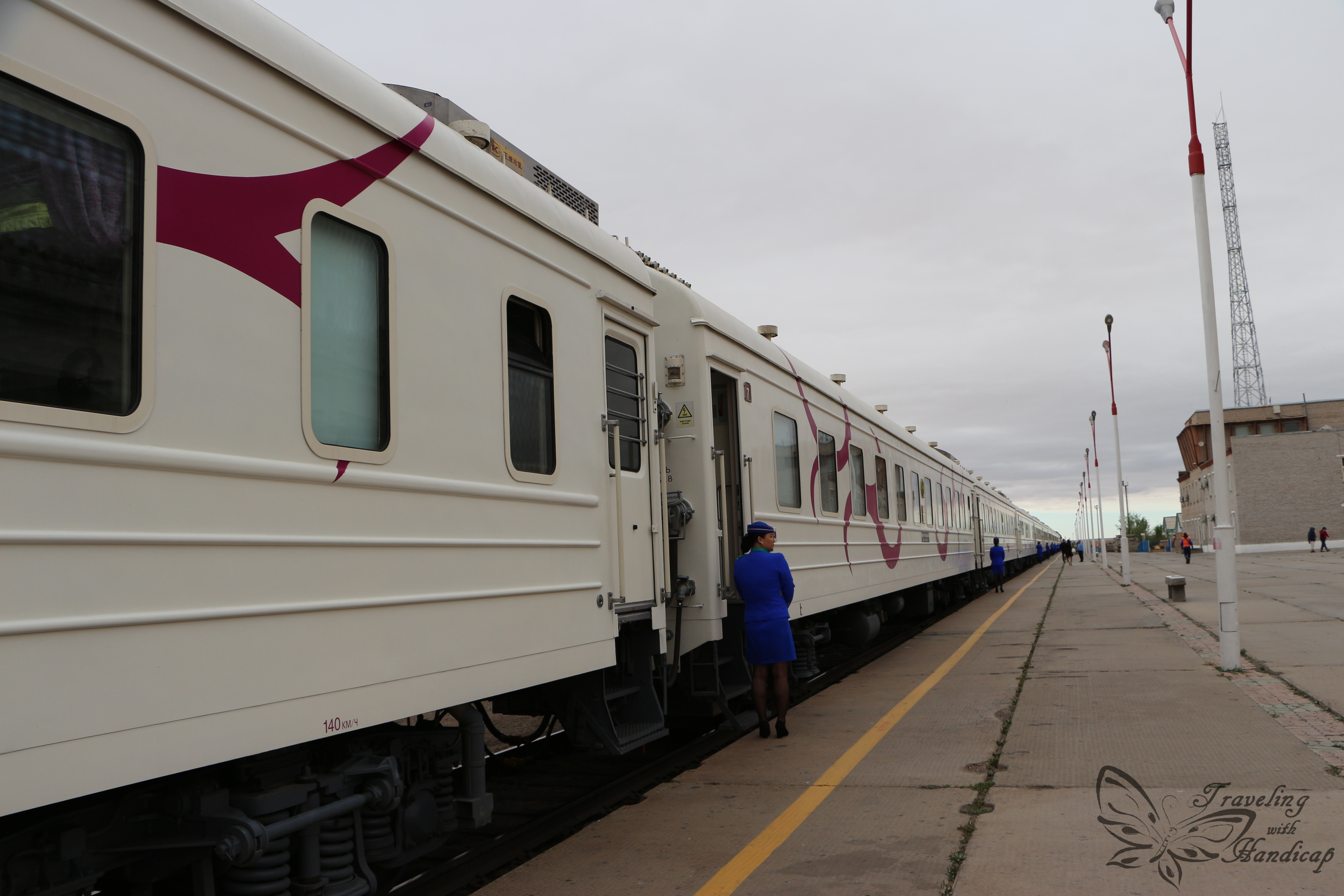
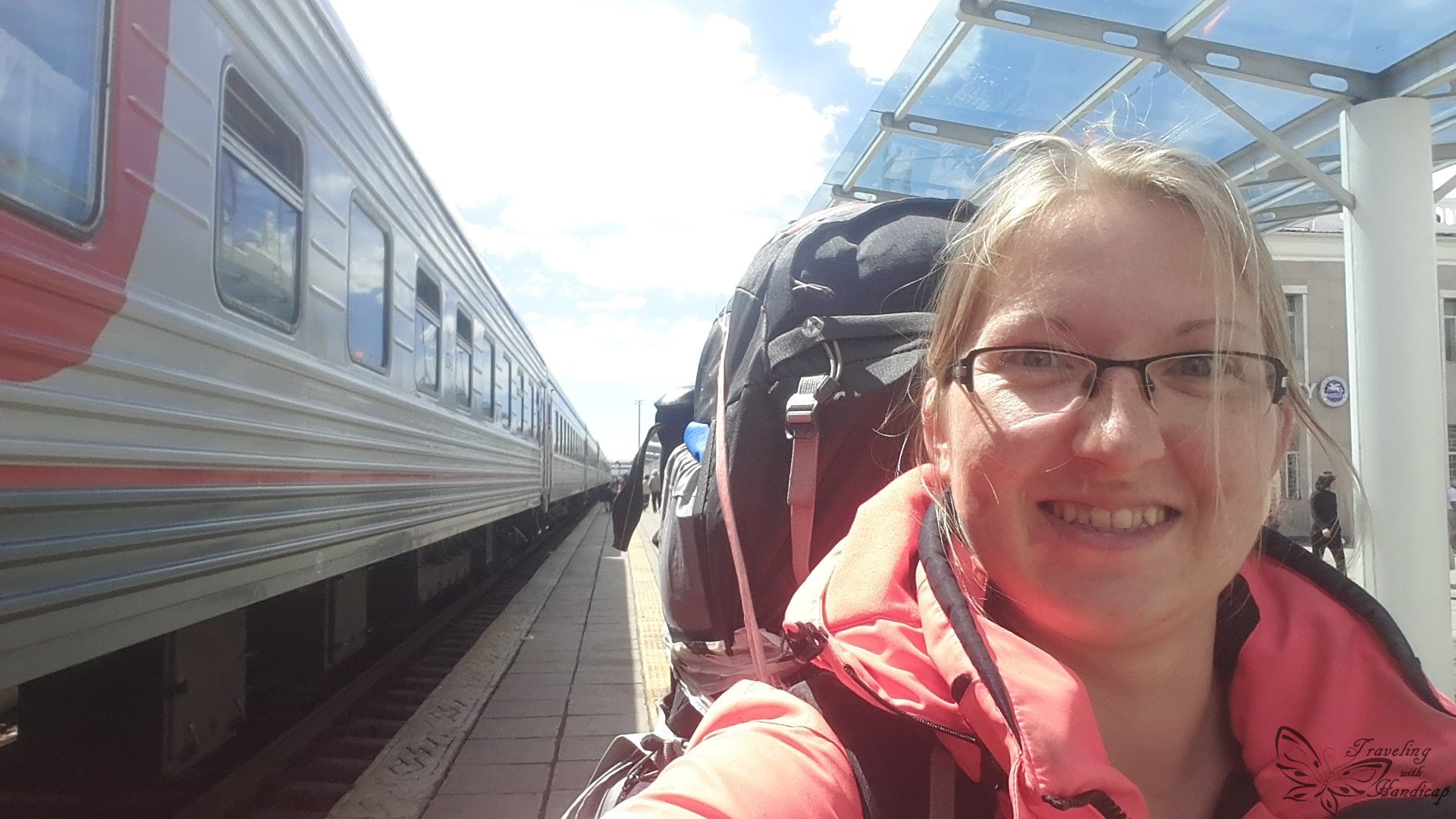
How to prepare for a great train journey
Facilities on the train
If you have checked out fancy documentaries on the Trans-Sibirian railway, you might have read about cool restaurant carriages to check out. I did not find any restaurant carriage on any of the two trains I took. According to the staff, restaurant carriages are the exception and should not be expected. After doing some additional research after my trip, I read that restaurant carriages might only be expected on the very expensive trains. Nevertheless, a water machine providing hot water (known as a samovar) is available at the top end of each carriage. Therefore, be prepared to bring enough food for 2 days (or longer) onto the train.
The trains are air-conditioned and have a heating system. However, the staff decides which temperature they set, which could be quite chilly or sweating hot. Therefore, both some warm and thin sleeping clothes are useful to bring. Some sign-language is also recommended if you want to explain that you feel the set temperature as far too cold or hot. Bathrooms are available in each carriage, either as one for the whole carriage or one per two cabins, depending on your traveling class.
When preparing for the trip, I read about women walking along the tracks and selling local, self-made food to all the hungry travelers. However, this might be the case in Russia, but not within China. After boarding the train in Beijing, we were not allowed to get off the train until the border town, Erenhot (Erlian). Within Mongolia, women waited at the station with buggies filled with sugar-drinks, instant noodles, and some self-made dumplings. Within Russia, I did not experience any people selling food at the tracks, though, it might still be happening at other stations.
Baggage space


What to bring
Clothing
During the train journey, you are going to be spending a lot of time in a small space, so comfort is definitely key. Moreover, chances are you’re going to spend the entire leg in one “train outfit”, including sleeping, with just underwear switched out each day. Consider the following:
- yoga pants or other comfy pants
- long sleeve or light thermal
- T-shirt
- a (sports) bra, something that’s easy to sleep in
- a pair of regular socks and a pair of warm socks
- a pair of flip-flops for the bathroom
- for colder days/seasons: jacket, scarf, boots (if you jump off the train)
Food
Luckily, I went shopping in Beijing the day before heading off towards Ulaanbaatar. I didn’t trust the restaurant carriage, maybe I didn’t like the food, maybe it would be too expensive. I filled my day bag with:
- drinks: teabags, coffee-powder, a big bottle of pure apple juice, bottled water (with gas)
- food: apples, some Chinese version of bread, instant noodles, sugar, salt, chocolate
For some longer legs, I moreover recommend dried fruits, oatmeal, and powdered milk. Within Russia and Mongolia, depending on the time and length of the stop, you may even buy local products from platform vendors. You’ll find all sorts of self-made seasonable food, as well as packed food like chocolate bars, sweets and soft drinks. Considering your dining experience, you will not get any plates or cutlery on the train. Therefore, make sure to bring some cutlery, a coffee mug, a bowl, and a water bottle with you. A while after heading off, the staff walked around from cabin to cabin and provided water jugs containing boiling water from the samovar.
Other valuable gadgets
During the whole journey, you might have different, more talkative or more silent people sharing the cabin with you. Similar to a hostel dorm, I recommend bringing:
- Earplugs
- Eye mask
- Headlamp (for the night, this is not as bright as turning on the light of the cabin)
- Padlock
At some parts of the journey, the landscape won’t change for hours. Therefore, bring anything you need to keep yourself entertained, such as:
- Headphones
- Phone/Tablet/Laptop/e-Reader
and of course an adapter. There might be different types of power outlets, depending on the train you’re taking. This is why a multi-plug adapter is the most convenient option. The voltage is 220-230V. Thus, if you have any devices based on 110-120V, also bring a power converter.
Last but not least, pack everything you need for the bathroom into your day bag. Consider bringing only the most necessary things, as you won’t need to get dressed for any fancy dinner party. I didn’t experience the train-ride as shaky, however, I was happy to have showered before and after the many hours on the train. Moreover, not all bathrooms contain a shower and if, it might not work as you are used to. Likewise, bring some sanitizer to clean up your cutlery or fingers before and after eating.

